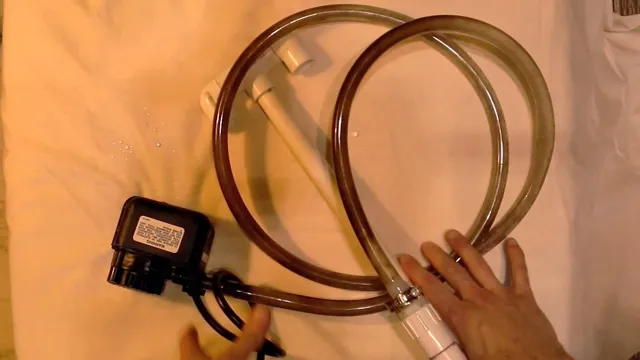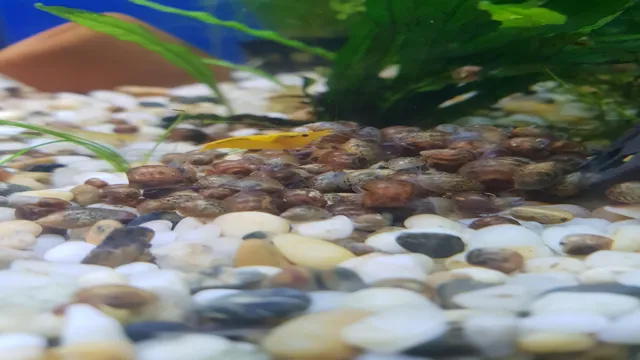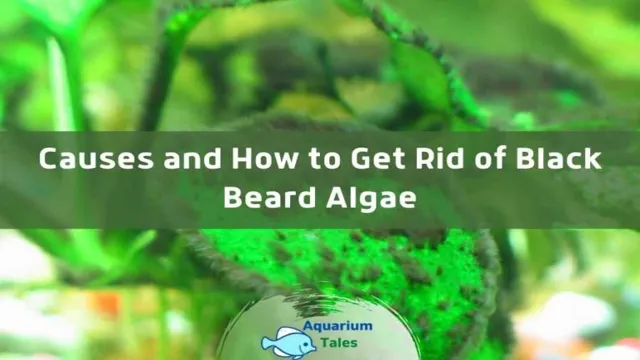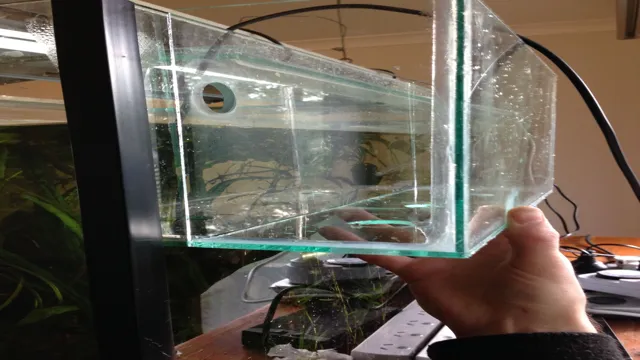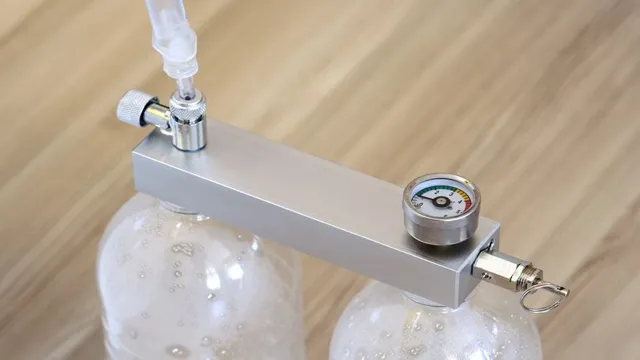Maintaining a clean aquarium is vital to ensure the longevity and health of your aquatic pets. One crucial aspect of aquarium maintenance is cleaning the aquarium pipes regularly. Over time, debris, algae, and other visible impurities can build up in the pipes, leading to a clogged filtration system and a dirty aquarium.
Keeping the pipes clean not only helps to maintain water quality but also ensures a steady flow of water to the aquarium, preventing stagnant water that can be harmful to your fish. In this blog, we’ll explore some easy and effective ways to clean aquarium pipes, so you can keep your aquarium sparkling clean and your fish thriving. So, let’s dive in!
Why Clean Your Aquarium Pipes
If you’re a beginner in the world of aquariums, you might be wondering why it’s important to clean your aquarium pipes. Aquarium pipes play a crucial role in the overall health and well-being of your aquatic pets by regulating water flow, filtration, and oxygen levels. Over time, these pipes can accumulate debris, algae, and other contaminants, interfering with their function and potentially harming your fish or plants.
To combat this, it’s recommended that aquarium owners clean their pipes regularly. The process isn’t complex and can easily be accomplished with a few basic tools and some elbow grease. Ultimately, keeping your aquarium pipes clean is an essential step to maintaining a healthy, happy aquatic environment for your pets.
So, don’t wait until it’s too late, grab your cleaning supplies and get those pipes sparkling clean!
Preventing Blockages and Algae Growth
Keeping your aquarium clean is essential to the health of your fish. One crucial aspect of maintaining a healthy tank is ensuring that your aquarium pipes are clean and free of blockages. Over time, organic matter can build up in your pipes, leading to unwanted algae growth and clogs.
Regular cleaning can prevent these issues and keep your tank’s water flowing smoothly. Neglecting your aquarium pipes could lead to serious health concerns for your fish, and even costly repairs down the line. Cleaning your pipes doesn’t have to be a complicated process, but it does require regular maintenance.
A simple way to keep your pipes clear is to use a gravel vacuum when you perform water changes. This will remove any buildup of waste before it can create a blockage. Ultimately, keeping your aquarium pipes clean is essential to the overall well-being of your aquatic pets, so make it a part of your regular tank maintenance routine.

Maintaining a Healthy Aquatic Environment
Maintaining a healthy aquatic environment is crucial for the well-being of your fish and aquatic plants. One essential aspect of aquarium maintenance is cleaning the pipes. Over time, debris, algae, and leftover food can accumulate inside the pipes, creating a breeding ground for harmful bacteria.
This buildup can ultimately affect the water quality, resulting in various issues like bad odor, cloudy water, and the death of your aquatic creatures. It is essential to clean your aquarium pipes regularly to ensure proper water flow and to prevent any blockages that can affect the filtration system. Additionally, cleaning the pipes helps to maintain a healthy environment inside the tank, promoting the growth and development of your fish and plants.
By keeping your aquarium pipes clean, you can avoid costly repairs and provide a healthy and clean environment for your aquatic friends. So, don’t wait until it’s too late, and give your aquarium pipes the attention they need to keep your aquatic environment in optimum condition.
Supplies Needed
To clean aquarium pipes effectively, there are certain supplies that you will need. Here’s a list of what you’ll require: a dedicated aquarium pipe cleaning brush, aquarium-safe pipe cleaner, bucket, gloves, and a towel. It’s important to use a brush that’s specifically designed for cleaning aquarium pipes to avoid damaging the pipes’ delicate internal structures.
Aquarium-safe pipe cleaner is essential, as regular pipe cleaners may contain chemicals that are harmful to aquatic life. The bucket will be used to contain the water that you’ll siphon out of the aquarium during the cleaning process, while gloves will protect your hands from any contaminants that may be present. Finally, a towel will help keep your work area clean and dry.
With all the necessary supplies at hand, you’ll be ready to begin the process of cleaning your aquarium pipes!
Fishnet or Strainer
When it comes to catch and release fishing, using the right net can make all the difference for the safety of the fish. While traditional fishing nets often have larger holes and can cause harm to the fish’s gills or fins, fishnets or strainers are more appropriate for catch and release fishing. These nets have smaller holes that are less likely to cause injury to the fish and are also easier to handle, making it simpler to release the fish back into the water unscathed.
When selecting a fishnet or strainer, be sure to look for one made from soft and flexible material that won’t damage the fish’s delicate scales or slime coat. Additionally, choosing a net in a color that blends well with the water can help prevent scaring the fish and make for a more successful catch and release. By using the right supplies for catch and release fishing, anglers can help protect the fish populations for years to come.
Long Flexible Brush or Pipe Cleaner
The long flexible brush or pipe cleaner is one of the essential supplies needed for various tasks. Whether you’re cleaning a narrow pipe or simply want to brush off some dust and debris, this tool can come in handy. The best part about it is that it’s flexible, making it easy to maneuver into tight spaces.
It’s also long enough to reach far into pipes and vents. The bristles are soft yet durable, so you won’t have to worry about damaging delicate surfaces. It’s a versatile tool that every household should have.
With its ability to clean hard-to-reach areas, you’ll be surprised at how often you’ll find yourself reaching for it. Keep it in your cleaning kit, and you’ll be ready to tackle any cleaning job that comes your way. So, go ahead and grab yourself a long flexible brush or pipe cleaner, and make cleaning much easier!
Bucket or Container
When it comes to organizing your belongings, the first thing you’ll need is a container. A container can come in many forms, such as a bucket, a box, or a bin. In choosing the right container, you’ll need to consider the size, durability, and material. (See Also: How to Make Freshwater Aquarium Crystal Clear: 6 Simple Steps for a Pristine Tank)
You can use a plastic bin or box for storing items that are smaller and lightweight, or a metal bucket for heavier items that require more sturdy protection. Additionally, ensure the container has a lid to keep your items safe and secure. Adhesives, scissors, markers and labels are also important to keep things organized.
With these supplies, you’ll be able to easily label and sort your belongings into the appropriate containers, ensuring easy access and proper storage. So which container is right for you? It all depends on what you’re storing. Consider the size and weight of your items, and choose a container that provides adequate protection and optimum storage space.
With the right container and supplies, organizing your home has never been easier.
Vinegar or Aquarium Safe Cleaning Solution
When it comes to cleaning aquariums, it’s important to use a solution that is both effective and safe for your fish and plants. One option that many aquarium enthusiasts swear by is vinegar. To make a vinegar cleaning solution, all you need is white vinegar and water.
Mix equal parts of both in a spray bottle and shake gently to mix. This solution can be used to clean the glass, ornaments, and even the filters in your aquarium without any harm to your aquatic pets. Another option is a specialized aquarium cleaning solution that is designed specifically for cleaning fish tanks.
These solutions are often pH balanced and free of harmful chemicals. Whichever option you choose, make sure to read the label carefully and always follow the instructions to ensure the safety of your aquarium inhabitants and the longevity of your tank.
Step by Step Guide
If you’re a fish owner, you know how important it is to keep your aquarium clean. One of the most neglected yet crucial parts to keep clean are the aquarium pipes. Over time, these pipes can accumulate waste and debris which can lead to harmful bacteria and diseases for your fish.
But don’t worry, cleaning your aquarium pipes is an easy process that can be done in a few simple steps. First, turn off your aquarium equipment and unplug it from the electrical source. Next, remove the pipes from the aquarium and rinse them with lukewarm water to remove excess debris.
Then, use a pipe cleaner or a long brush to scrub the inside of the pipes thoroughly. Rinse the pipes once more and reattach them to the aquarium. Finally, plug your equipment back in and turn it on.
Voila! Your aquarium pipes are now clean and your fish can swim happily in a healthy environment. Remember to clean the pipes at least once a month to prevent any buildup.
1. Turn Off Your Aquarium Equipment and Unplug Everything
If you’re planning to turn off your aquarium equipment and unplug everything, there are a few important steps you’ll need to follow to ensure everything is done properly. First and foremost, you need to make sure the power is completely disconnected from all of your aquarium equipment. This means unplugging everything, including your filters, heaters, pumps, and lights.
Once everything has been unplugged, it’s a good idea to label each cord so you can easily identify it later when setting everything back up. Next, you’ll want to remove any decorations or plants from your aquarium. This will make it easier to clean and ensure that none of your aquarium residents are harmed during the process.
Make sure you carefully remove any fish from the tank and place them in a separate container with fresh water. Once your aquarium is empty, take the opportunity to give it a thorough cleaning. Use a sponge or brush to scrub the sides of the tank and remove any debris that may have accumulated.
Before you start to put everything back together, take a few minutes to check that all of your equipment is in good working order. Inspect your filters, pumps, and heaters for any cracks or damage. If anything is damaged, be sure to replace it before setting everything back up.
Once you’re ready, you can start to plug everything back in and restore power to your aquarium equipment. Take your time setting everything up, making sure to follow the manufacturer’s instructions for each piece of equipment. In conclusion, turning off your aquarium equipment and unplugging everything is an important process that requires careful attention to detail.
By following these steps and taking the time to do things properly, you can help ensure that your aquarium remains healthy and your fish continue to thrive. Remember, the key to success is in the details, so take your time and be thorough to achieve an aquarium that will make you and your fish happy for many years to come.
2. Remove Any Large Debris With a Net or Strainer
When it comes to cleaning your swimming pool, the first step is to remove any large debris that may be floating on the surface of the water. You can do this by using a net or strainer. Large debris such as leaves, twigs, and bugs can accumulate in your pool over time, and if left unchecked, can lead to hygiene and sanitation issues.
A net or strainer is an effective tool for removing this debris quickly. Simply start at one end of the pool and work your way around, scooping up any visible debris. Once you have removed all the large debris, you can move on to the next step in the cleaning process.
By using this method to remove any large debris, you will be ensuring a clean and safe swimming experience for everyone. (See Also: How to Breed Koi in Aquarium: A Comprehensive Guide to Successful Koi Breeding)
3. Use the Brush or Pipe Cleaner to Scrub the Inside of the Pipes
Now that you’ve filled your pipes with the cleaning solution, it’s time to scrub the insides using a brush or pipe cleaner. This step is critical to ensuring that all of the residual buildup is loosened from the walls of the pipes. You want to make sure that you’re using a brush or cleaner that fits snuggly within the pipe, so all of the nooks and crannies can be reached.
Start at one end of the pipe and work your way through to the other end, with a back-and-forth motion. This will help dislodge any loose debris and scrub away any stuck-on buildup. Make sure to pay extra attention to any areas that might have a buildup of mineral deposits or other stubborn debris.
Keep repeating this step until you feel confident that you’ve scrubbed every inch of the pipe. Don’t rush this step, as it’s critical to getting clean and healthy pipes. By the end, you’ll have sparkling clean pipes that are ready to function at their best.
4. Rinse the Pipes with Water
Now that you’ve successfully removed the build-up from your pipes, it’s time to rinse them out with water. This final step in the process is crucial to ensure that everything has been completely flushed out of your pipes and they’re running smoothly. Start by turning on the faucet and letting the water run through the pipes for a few minutes.
This will help to remove any remaining debris that may have been loosened up during the cleaning process. Make sure to run both hot and cold water to ensure that all parts of the pipes are thoroughly rinsed. If you notice any further clogs or slow draining, repeat the cleaning process or consider calling in a professional.
By following these simple steps and rinsing your pipes with water, you can keep your plumbing system functioning at its best and avoid costly repairs down the road.
5. Soak the Pipes in Vinegar or Cleaning Solution for 15-30 Minutes
If you’re looking to clean your pipes, soaking them in vinegar or a cleaning solution is a great option. This step can be done after flushing out any debris or buildup in the pipes. Simply pour the vinegar or cleaning solution into the pipes and let them sit for 15-30 minutes.
This will help break down any remaining residue and leave your pipes squeaky clean. Vinegar is a great natural cleaner that is safe to use and won’t harm your pipes. If you don’t have vinegar on hand, a cleaning solution can also do the job, but be sure to choose one specifically designed for pipes.
After soaking, rinse the pipes with water to remove any remaining solution and dry them with a towel. Your pipes are now ready to be used again! This easy step can help prevent clogs and keep your pipes in great shape. So, why not give it a try?
6. Rinse the Pipes Thoroughly with Clean Water
To ensure the pipes remain clean and functioning at their best, it’s important to rinse them thoroughly with clean water. This should be done after any cleaning or maintenance, as leftover chemicals or debris can cause damage or blockages. To begin, turn off the water supply and open all the taps to empty any remaining water in the pipes.
Then, use a hose or bucket to run clean water through the pipes, starting at the highest point and working your way down to the lowest. This will help flush out any remaining residue and ensure the water flows smoothly through the system. Be sure to run the water for several minutes to allow for a thorough rinse.
Once complete, turn off the faucets and water supply, and inspect the pipes for any signs of damage or issues that may need attention. By regularly rinsing your pipes with clean water, you can help maintain their longevity and keep your plumbing system in top shape.
Maintenance Tips
Aquariums are a stunning addition to any home, but it’s important to keep them clean and maintained to ensure a healthy environment for your aquatic pets. One area that often goes unnoticed during cleaning routine is the pipes within the aquarium. These pipes can easily accumulate algae, debris, and other waste that needs to be removed.
The first step in cleaning aquarium pipes is to turn off all equipment connected to them. Then, remove the pipes and rinse them with hot water to loosen any particles stuck inside. You may use specialized brushes or pipe cleaners to remove stubborn dirt.
Once cleaned, make sure to reconnect the pipes and test the aquarium to ensure everything is functioning properly. A well-maintained aquarium is not only visually stunning, but also provides a healthy environment for your aquatic pets to thrive in.
Clean Your Aquarium Pipes Regularly
Maintaining a healthy aquarium is essential for preserving the life of your aquatic pets. Over time, pipes in your aquarium can become clogged with debris, algae, and other organic matter, making it difficult for water to flow properly through them. With regular maintenance, you can prevent this from happening and keep your aquarium in top condition for your aquatic animals to thrive in.
Cleaning your aquarium pipes can be a bit of an arduous and tricky task. It requires you to be patient and careful so that you do not accidentally harm your aquatic pets. However, maintenance is crucial and can be done using simple tools such as a pipe cleaner or a long brush.
By doing this simple task, you are ensuring that your aquarium will continue to function optimally and that your aquatic pets will have a cleaner, safer environment to live in. So, be sure to clean your aquarium pipes regularly so that your aquarium remains a healthy and thriving environment for your pets. (See Also: How to Germinate Aquarium Seeds: A Comprehensive Guide for Aquarists)
Monitor Your Water Quality and Fish Behavior
Maintaining a healthy aquatic ecosystem for your fish is crucial to their overall well-being and can be achieved by closely monitoring your water quality and fish behavior. One maintenance tip that can help prevent issues is performing regular water changes to ensure the water remains clean and free of harmful pollutants. Another important aspect to monitor is your fish’s behavior.
Changes in swimming patterns or appetite could indicate a potential problem with water quality or an underlying health issue for the fish. It’s also important to keep an eye on the overall appearance of the aquarium, including the condition of the plants and decor. A clean and organized aquarium not only looks great but also provides a less stressful environment for your fish to thrive in.
By staying vigilant and following these maintenance tips, you can help ensure a happy and healthy environment for your aquatic pets.
Avoid Overfeeding Your Fish
When it comes to maintaining your aquarium, one of the most important tips to keep in mind is avoiding overfeeding your fish. It’s easy to want to shower our aquatic friends with food to make them happy, but this can actually do more harm than good. When fish are overfed, uneaten food can quickly pile up and contaminate the water, leading to harmful bacteria growth and potentially making your fish sick.
Not to mention, overfeeding can also lead to obesity and other health issues for your fish. So, how much food should you be giving your fish? It’s recommended to only feed them what they can consume within 2-3 minutes, once or twice a day. By doing so, you’ll not only ensure the good health of your fish, but also maintain the cleanliness and stability of your aquarium.
Remember, a little goes a long way when it comes to feeding your fish.
Consider Using a Biological Cleaner
If you are looking for a more natural solution to keeping your home clean, a biological cleaner might be worth considering. Chemical cleaners can be harmful to the environment and can even cause health problems for humans and pets. Biological cleaners use naturally-occurring bacteria and enzymes to break down organic matter, such as dirt, grime, and stains.
These cleaners are gentler on your home surfaces, yet effective in getting rid of nasty buildup. Plus, they won’t leave behind any toxic residue or unpleasant odors. Give your home a regular cleaning with a biological cleaner to maintain a more healthy and eco-friendly environment.
Conclusion
So there you have it, folks! Cleaning aquarium pipes may seem like a daunting task, but with a few simple steps and some elbow grease, you can ensure your fishy friends are swimming in a clear and healthy environment. Remember, just like in life, a little maintenance goes a long way. And if all else fails, just remember the wise words of Dory from Finding Nemo, “just keep swimming, just keep swimming!” Happy cleaning!”
FAQs
Why do aquarium pipes need cleaning?
Aquarium pipes can get dirty and clogged with debris, which can cause issues with water flow and the overall health of your aquatic pets. Regular cleaning is necessary to ensure a healthy and clean aquarium.
How often should I clean my aquarium pipes?
It is recommended to clean your aquarium pipes at least once a month to prevent buildup of debris and maintain optimal flow.
What materials do I need to clean aquarium pipes?
You will need a pipe cleaning brush, aquarium-safe cleaning solvent, a bucket, and a towel.
How do I clean aquarium pipes with a cleaning solvent?
First, turn off all equipment and drain the water in the pipes. Then, add the solvent to a bucket of water and run it through the pipes using the pipe cleaning brush to remove any buildup.
Can I clean aquarium pipes without a cleaning solvent?
Yes, you can use a mixture of vinegar and water to clean the pipes. However, make sure to rinse the pipes thoroughly with clean water after cleaning.
What are the benefits of cleaning aquarium pipes?
Cleaning aquarium pipes can improve the water flow, prevent blockages, and maintain a healthy environment for aquatic pets.
What should I do if I encounter stubborn debris or blockages in the pipes?
If using a cleaning solvent does not work, you can try using a pipe snake or hire a professional aquarium cleaner to resolve the issue.

